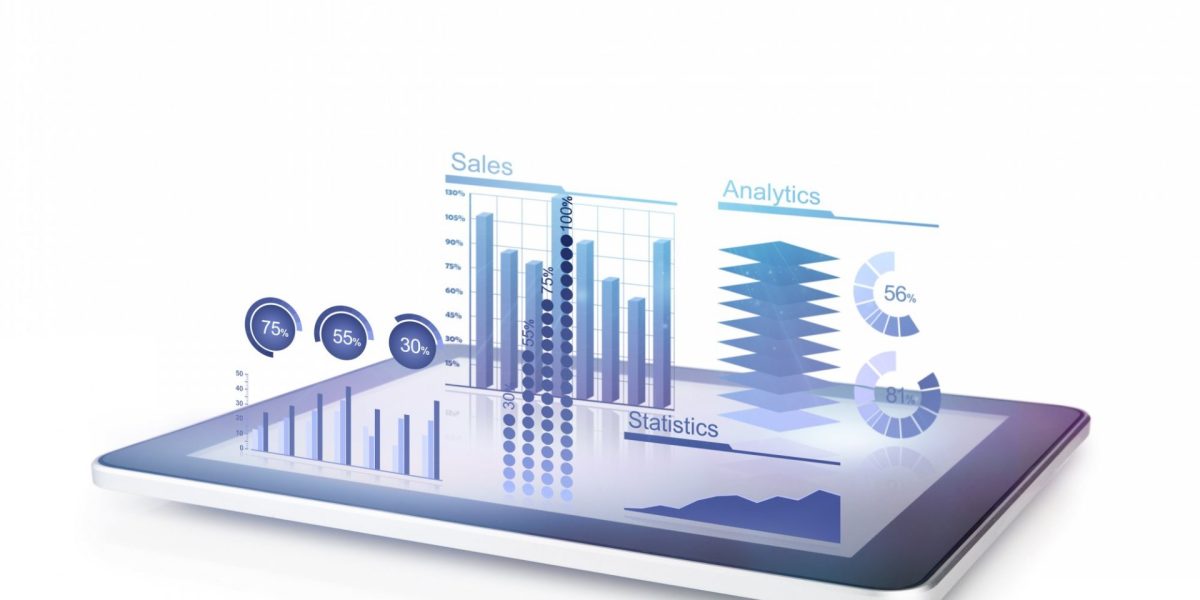Data Visualization Software is no longer just a tool for analysts or data scientists. In today’s fast-moving business environment, many departments and teams rely on it to make better decisions, understand patterns, and explain ideas more clearly. From marketing to finance, operations to customer support visual tools help people at every level work smarter and faster.
Let’s explore how different areas in a business benefit from using Data Visualization Software, and how it makes a real difference in daily operations and long-term planning.
Understanding the Role of Data Visualization in Business
Before diving into specific departments, it helps to understand why Data Visualization Software matters in general business use.

Turning Complex Data into Clear Insights
Every company deals with huge amounts of data. This could be sales numbers, website visits, customer feedback, or even supply chain movements. When this data is shown in the form of charts, graphs, or dashboards, it becomes much easier to understand. Instead of reading long spreadsheets, teams can see patterns, trends, and issues at a glance.
Making Quick and Confident Decisions
Visual tools help speed up decision-making. When leaders or team members can understand data clearly, they don’t have to waste time checking or explaining things. This helps businesses move faster and avoid delays.
Marketing Teams Use Visualization to Track Campaigns and Trends
Marketing involves a lot of moving parts. Campaigns are run across channels like social media, email, websites, and more. Data comes in from different tools and platforms. Data Visualization Software helps marketers bring all this together.
Tracking Performance Across Channels
Marketers can track key data points like ad clicks, email opens, website visits, and social media engagement. Dashboards show these details in real-time. This allows the team to see what’s working and what needs to change.
Understanding Customer Behavior
Heatmaps, funnel charts, and customer journey maps help marketers understand how people interact with their brand. Are customers leaving a page quickly? Are they dropping off during checkout? These insights help improve user experience.
Reporting Made Easy
Visual reports are much easier to share with leadership or clients. Instead of sending long reports filled with numbers, marketers can show clear visuals that explain everything in seconds.
Sales Teams Gain Clarity on Pipeline and Targets
Sales teams need to stay on top of their leads, opportunities, and targets. Data Visualization Software gives them the tools to manage this easily.
Keeping Track of Sales Performance
Sales dashboards can show how each team member is doing, how close they are to reaching their goals, and which leads are the hottest. This helps sales managers guide their teams better.
Managing the Sales Funnel
Sales funnels show how many leads are at each stage of the buying process. Visual tools make it easier to spot where deals are getting stuck or lost, so action can be taken early.
Comparing Monthly or Quarterly Results
Bar charts, pie charts, and trend lines help compare performance over time. This helps in setting future goals and improving strategies.
Finance Teams Get a Clearer Picture of the Numbers
Finance is one of the most data-heavy parts of any company. But raw numbers can be overwhelming. Data Visualization Software helps finance teams turn numbers into clear visual stories.
Analyzing Cash Flow and Budget
Finance dashboards can show income, expenses, profits, and forecasts all in one place. This helps with better financial planning and control.
Spotting Spending Patterns
Visual tools help track where money is being spent, which areas are under or over budget, and where savings can be made. This is very helpful during audits or reviews.
Sharing Reports with Non-Finance Teams
Not everyone in a company understands financial language. Charts and visuals make it easier for all departments to understand the financial health of the business.
Operations and Supply Chain Use Visuals to Monitor Processes
The operations side of a business includes many details inventory, suppliers, production lines, shipping, and more. Data visualization helps keep all of this under control.
Real-Time Monitoring
Dashboards allow operations managers to track inventory levels, delivery times, and vendor performance in real-time. This reduces the chances of delays or losses.
Improving Process Efficiency
Using visuals like flowcharts and performance graphs, teams can see which steps are slowing down the process. This helps in finding ways to improve speed and reduce costs.
Forecasting Demand and Supply
By analyzing past trends visually, supply chain teams can better plan future stock levels. This helps prevent shortages or excess inventory.
Human Resources Gain Better Insight into Employee Data
People are at the heart of every company. HR teams deal with a lot of data recruitment, retention, training, benefits, and performance. Data Visualization Software helps them make better people-related decisions.
Analyzing Workforce Trends
HR dashboards can show hiring trends, turnover rates, and training completion. This helps HR understand how people move through the company.
Supporting Diversity and Inclusion Efforts
Data visualization helps highlight gaps in gender, age, or skill diversity. These visuals support planning for a more inclusive workplace.
Tracking Employee Engagement
By visualizing results from surveys or feedback tools, HR can get a clear view of employee satisfaction and well-being. This helps create better work environments.
Customer Support Uses Visual Tools to Spot Issues Early
Customer support teams work closely with people. They handle complaints, queries, and feedback. Visual data tools help them understand customer behavior and improve service.
Identifying Common Issues
Charts can show which types of problems are coming up most often. This helps fix recurring issues quickly.
Measuring Support Team Performance
Dashboards show how long it takes to solve a ticket, how many cases are open, and customer satisfaction scores. This helps in training and performance planning.
Improving Self-Service Tools
If customers often search the same questions, this trend can be seen visually. This helps create better FAQ pages or help tools.
Product Teams Use Visual Data to Build Better Products
Product teams need to know what users want, what features they use most, and what can be improved. Visual tools turn usage data into action.
Understanding Feature Usage
Heatmaps and usage graphs show which parts of a product are being used most. This helps in focusing development time on high-value areas.
Collecting Feedback Visually
Using visual tools, feedback from users can be grouped, tagged, and displayed. This makes it easier to spot patterns or problems.
Planning Product Updates
Roadmaps and timelines created with visualization software help product teams and other departments stay aligned on what’s coming next.
Leadership Teams Get a Full Business View at a Glance
Company leaders need to see the big picture. Data Visualization Software helps them track progress across all departments in one place.
Connecting All Business Areas
Dashboards can be customized to pull data from all parts of the business. This gives leadership a full view of performance, risks, and opportunities.
Making Better Strategic Decisions
When data is presented clearly, leaders can make smarter decisions faster. They can spot growth areas, adjust plans, and align everyone on the same path.
Choosing the Right Data Visualization Software for Your Needs
While many tools are available, the right Data Visualization Software should match your team’s size, data type, and usage goals. Some tools are great for beginners, while others offer deeper analysis features. What matters most is that it helps your team do their work better.
Conclusion
Data Visualization Software is not limited to tech teams or analysts. It helps every area of a business make sense of their data, solve problems faster, and work with more clarity. Whether it’s tracking sales, managing operations, or planning the next product feature, visual tools turn raw numbers into meaningful stories.
If your business is still stuck with spreadsheets and static reports, now is the time to bring in visual tools that make things clearer and easier for everyone. From marketing to finance, every team can benefit from using Data Visualization Software in their daily work.












